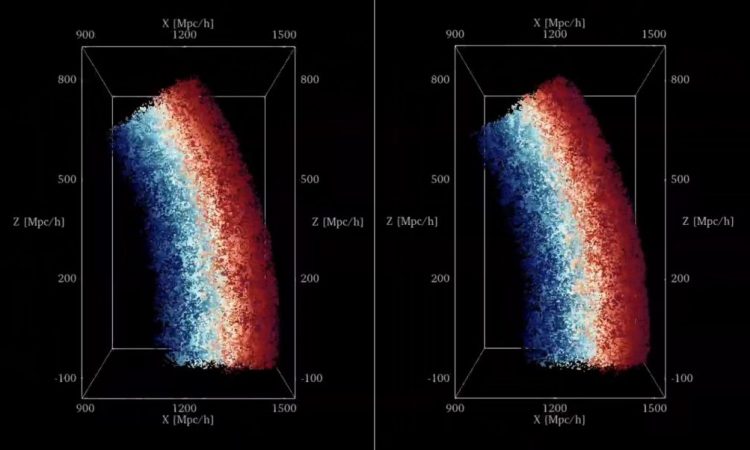Astrophysicists have used artificial intelligence to precisely calculate the “settings” of the universe

The new estimates of the parameters that form the basis of the standard model of cosmology are much more precise than previous approaches, which used the same data on the distribution of galaxies.
The standard model of the universe is based on just six numbers. Using artificial intelligence, researchers at the Flatiron Institute have used them of the universe. Thanks to information regarding the distribution of galaxies, they managed to estimate the values of five of these so-called “cosmological parameters” with incredible precision.
Advertisement
The standard model
The Standard Model includes a number of elements: the Big Bang, dark energy, cold dark matter, ordinary matter and . It works well for describing the large-scale structure of the Universe, but there are still some gaps in our understanding. Quantum physics can describe the Universe on a smaller scale, but it clashes with gravity, and there are also unanswered questions about dark matter and dark energy. Understanding these points can help us understand the evolution and structure of the Universe.
How the distribution of galaxies helped researchers
A team of researchers from the Flatiron Institute managed to extract some information in the distribution of galaxies to estimate the values of five parameters. The accuracy was a big improvement over the values obtained during previous attempts. Using AI technology, the team’s results had less than half the uncertainty for the element that describes the density of the Universe compared to the previous attempt.
The team generated 2,000 simulated universes after inputting cosmological parameters. These included the expansion rate, distribution and density of ordinary matter, dark matter. The data was then compared with over one hundred thousand observations of real galaxies. From this, it was possible for researchers to estimate the real parameters of the Universe.
The universe settings
The parameters that the team managed to fine-tune are those that describe how the Universe operates on a larger scale. They are essentially the settings of the Universe and include the amount, dark matter, dark energy, conditions after the Big Bang, and how dense the matter is. Previously these settings were calculated using observations from the structure of galaxy clusters. To arrive at a more accurate set of settings, the observations had to go down to a smaller scale, but this had not been possible.
How artificial intelligence can help us understand the universe
Instead of using observations alone, the team used AI to extract small-scale information that was hidden in existing observational data. learned to correlate parameters with the observed structure of the Universe, but on a small scale. In the future, the team hopes to use its new approach to solve other problems. The uncertainty about the Hubble constant is one example where the team hopes artificial intelligence can help refine its value. However, in the coming years, and as observational data become more detailed, both the Hubble constant and the settings of the universe will be understood much better, scientists hope.
Read more:

